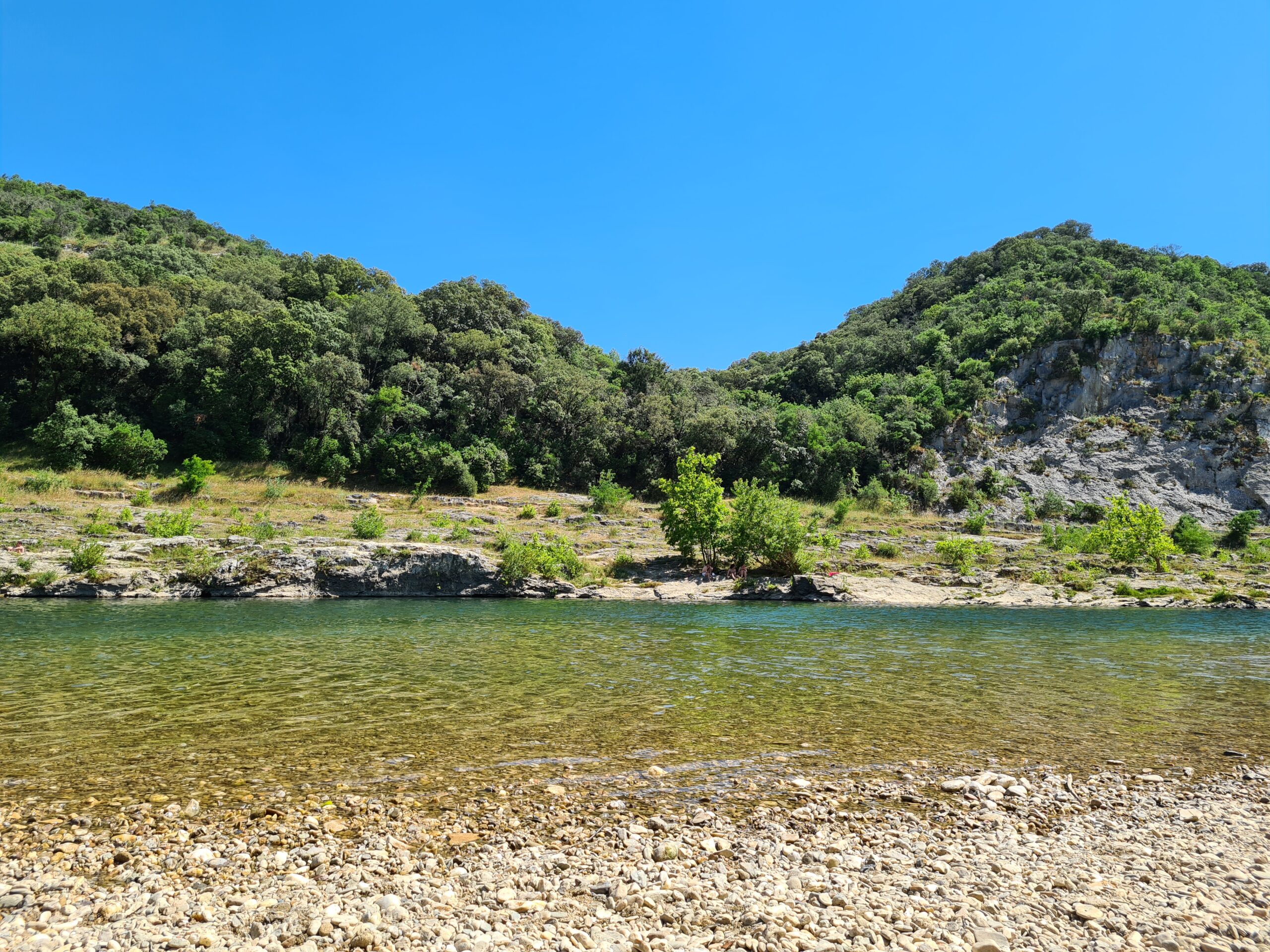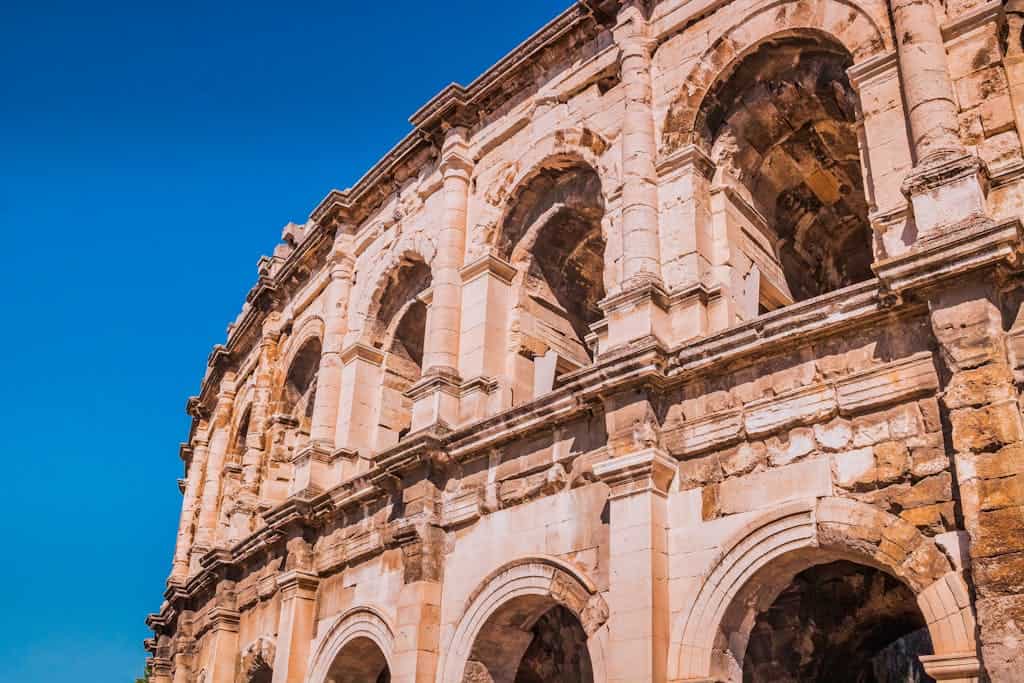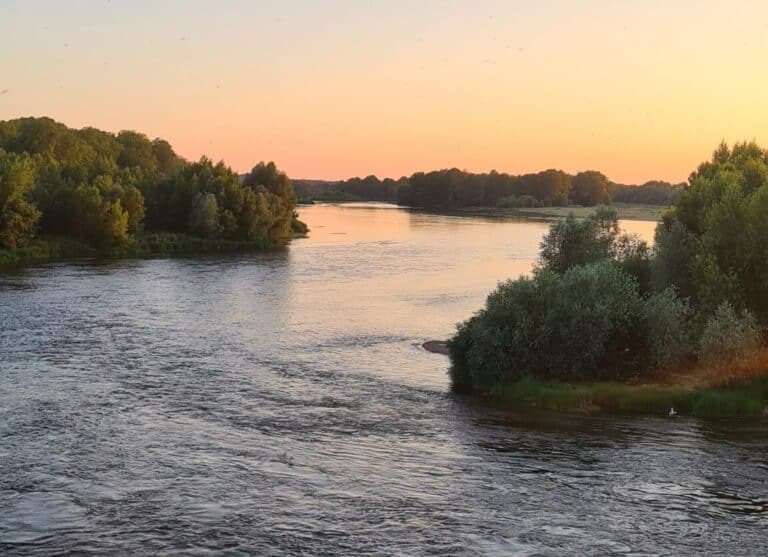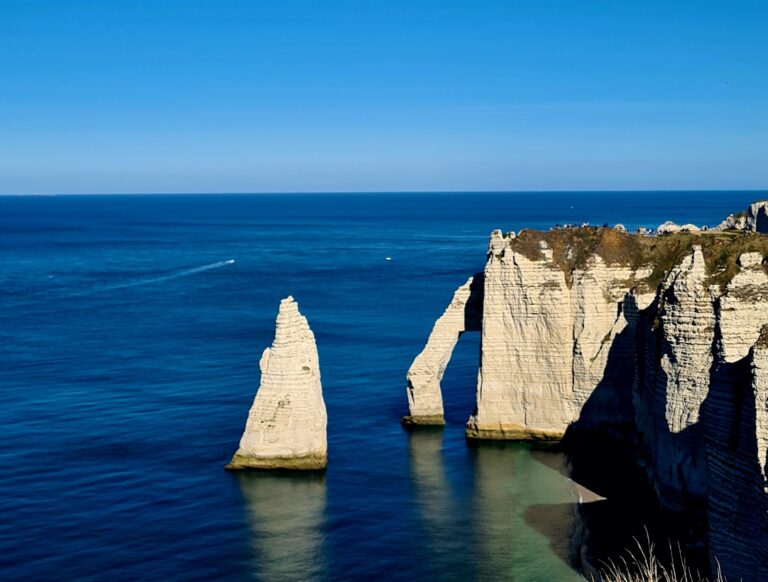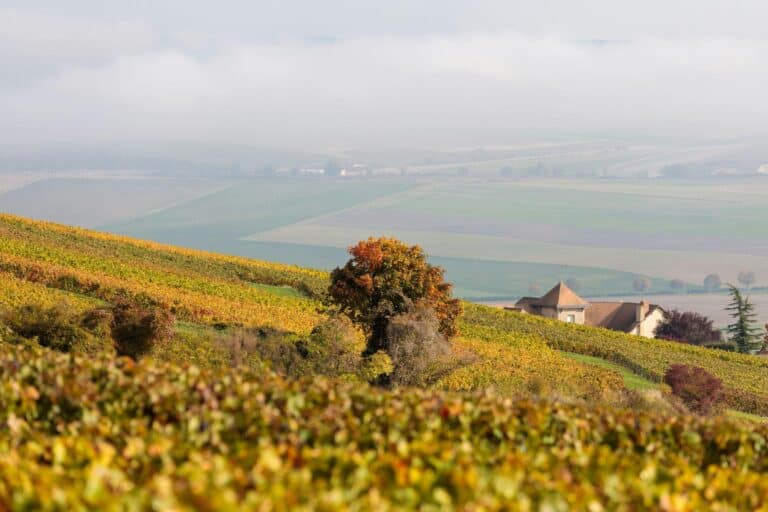South of France cities: spotlight on Nîmes
What South of France cities should you visit?
And why it should it be Nîmes!
Nîmes is one of those South of France cities that the French like to keep to themselves, a true hidden gem. You might not realize it, but you’ve already heard of Nîmes before. Nîmes. Denim. Does that rhyme? That would be because the famous material for blue jeans, denim, comes from Nîmes. Or, as we say in French, de Nîmes!
Nîmes is a cute little city in the Occitanie region in the South of France, very pleasant to visit thanks to its Mediterranean atmosphere. Home to many Roman ruins, it is often nicknamed the “French Rome”. And while it would not be a substitute for Rome (nothing could ever be), having been in both cities, I can say that Nîmes is truly the closest you could get to Roman esthetics and history in France.
A few monuments contribute to this feeling:
- The Arène (Arena), one of the best-preserved amphitheaters in the world.
- The Tour Magne (Magne Tower), an impressive structure overlooking the city.
- The Maison Carrée (Square House), a remarkably well-preserved temple dedicated to the imperial cult of Augustus.
- Pont du Gard (Gard’s Bridge), an old Roman aqueduct still in perfect condition.
Nîmes manages to combine its old Roman heritage, which is on public display, with the necessities of modern life. I’ve listed below 9 things to do in Nîmes.

Hi! I’m Anya, founder of the travel blog Stop Going to Paris which focuses on underrated cities in Europe. I’m a passionate traveler but above all, a passionate adventurer always looking for the hidden gems that deserve more love.
After 10 years and 70+ destinations, I can help you plan your European trip: book a call with me. It includes a full itinerary with unique destinations, transportation, accommodation and activities.
Fun fact, I live in… drumroll… Paris! That’s why the name of the blog is funny.
Jardins de la fontaine
Les Jardins de la Fontaine (Fountain’s Gardens) are a 15 ha park built in 1745 in the city center, with water features like ponds and a river; and numerous impressive, beautiful fountains. It was my favorite place for a few hours of rest, I would take a stroll there during summer, sit under the tree shade to read my book or eat my ice cream while admiring the swans.
The park was built around the city’s old main water source, which was a sacred place for the Celtic god Nemausus (from where the name Nîmes is taken, you’ll notice).
The Park was built after the discovery of Roman ruins in 1742 that fascinated Europe in the Renaissance. Like everywhere in the city, you can find Roman ruins in the park such as the Temple of Diane, or the Magne Tower.
Later, the park came to be embellished with an artificial cave, the Jardin de Rocailles – a typical Mediterranean garden – and the Bassin Montgolfier, filled with aquatic plants.
The Arena
These 3 monuments are the main reason Nimes is called the French Rome: the Arène (Arena), the Tour Magne (Magne Tower), and the Maison Carrée (Square House).
The Arène is one of the best preserved Roman amphitheaters in the world, very much worth the detour. Visitors can climb up and down the stands and inside the arena, tread the same ground a spectator or a gladiator in Ancient Roman Nîmes would tread, and get the closest possible today to see what they would have seen during these games. Inside, you’ll find corridors and rooms where food was entreposed.
The fascinating history of the Arena doesn’t stop there, however. During the medieval era, houses were built inside the Arena, and later it was used as a way to isolate the people sick with the bubonic plague from the rest of the city. Today, the Arena is mostly used for festivities, including concerts in July and August and the festival Feria de Nîmes where bullfights still take place.
I highly recommend booking a guided visit to the Arène de Nîmes to explain the history of this monument.
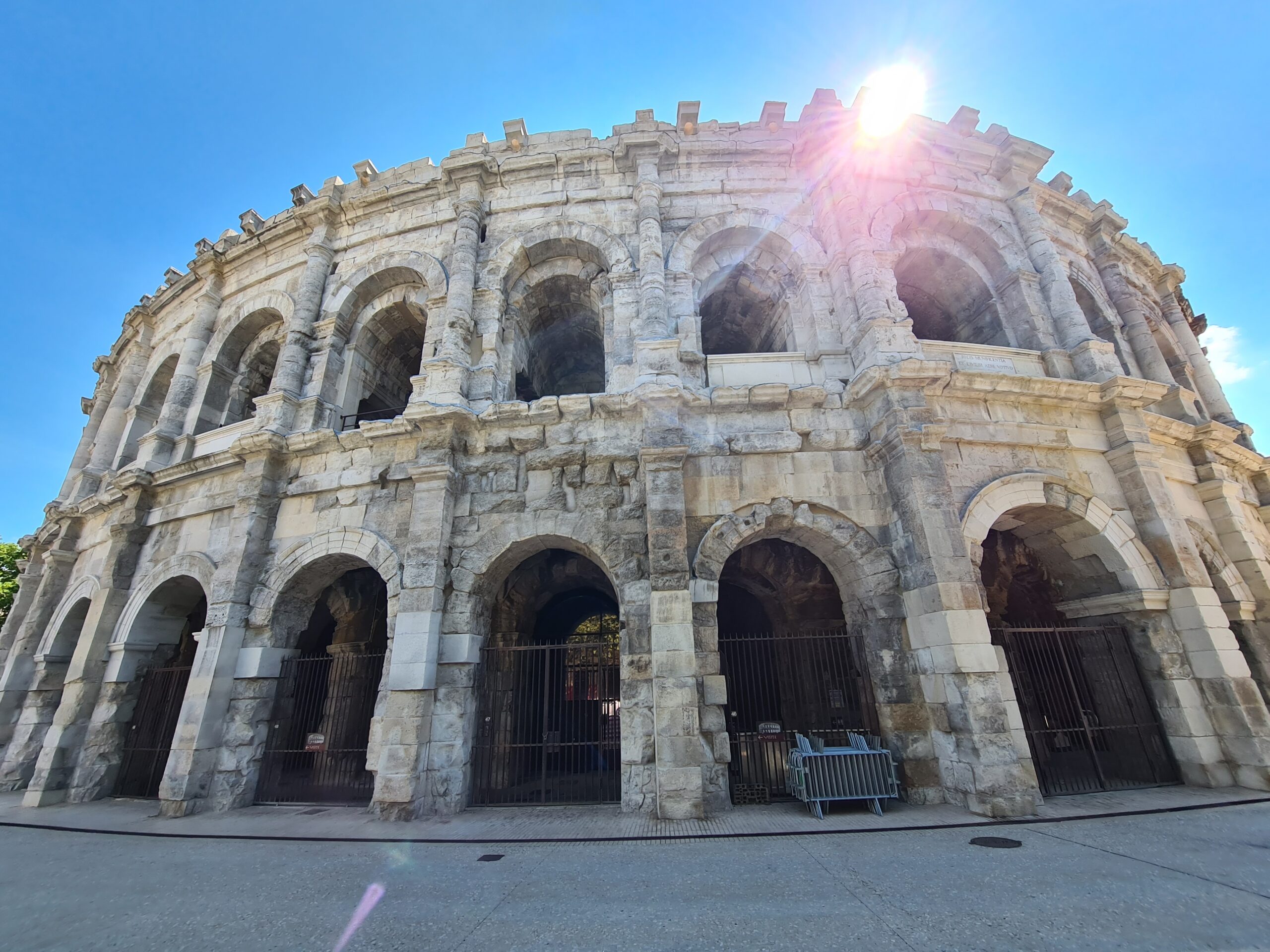
Tour Magne
The Magne Tower is the only standing tower in Nîmes among the 80 that were built around the city along its fortification (yes, Nîmes used to be a walled city!). Built on the highest ground in the city, the tower’s old purpose was to spot travelers from far away. Today, it is mainly used for the best view of Nîmes and its surroundings.
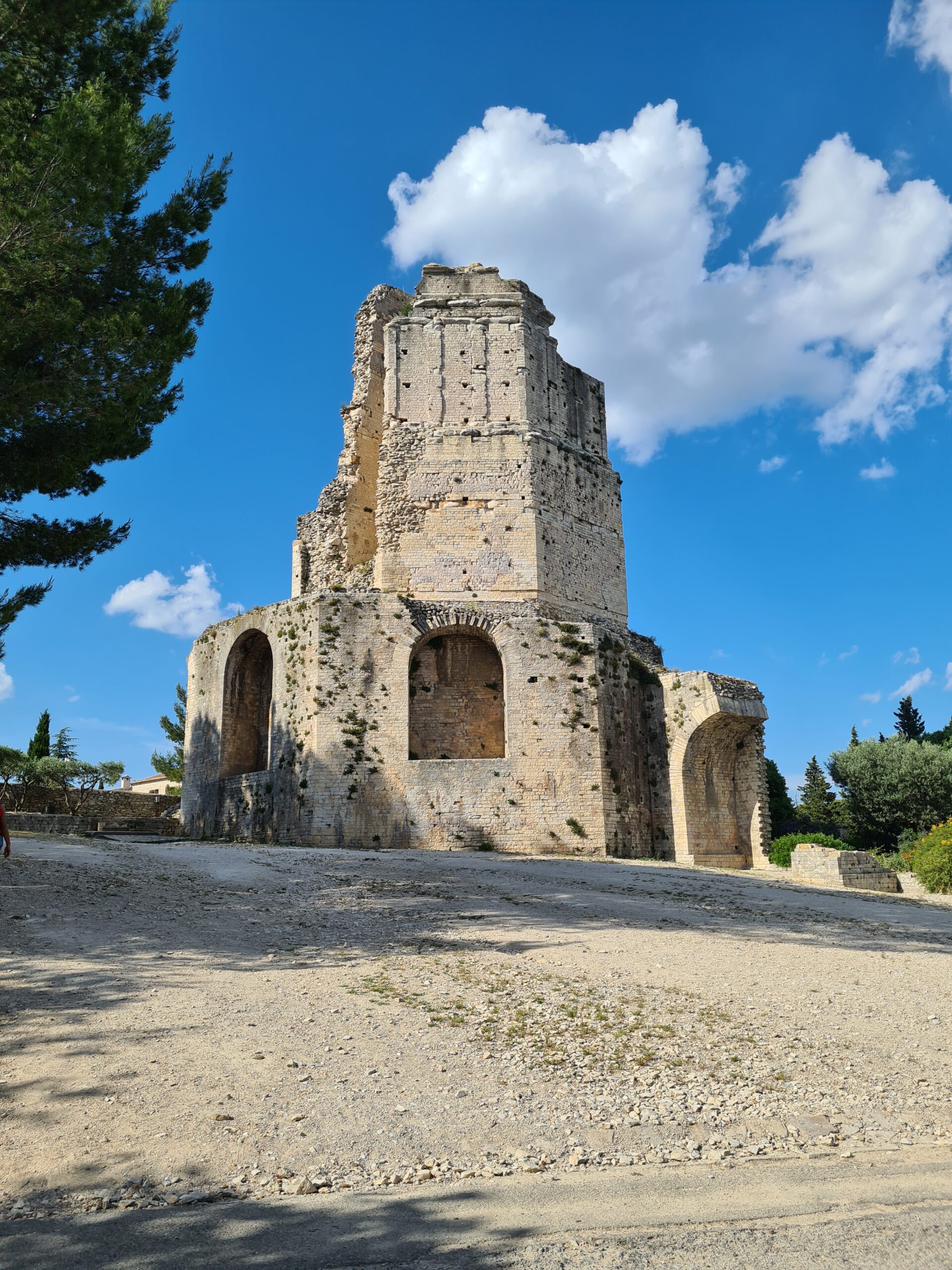
Maison Carrée
Maison Carrée is one the best preserved Roman temples in the world. Unlike other temples, this one was not devoted to a deity but rather to the cult of Augustus, the first emperor of Rome. It is a testament to the power of the emperor at the height of his empire. When I visited the monument a few years ago, they projected a historical movie on daily life in the city of Nîmes in its Roman Era.
The Roman Days of Nîmes
The best event however is the Journées Romaines de Nîmes (Roman Days of Nîmes), which is the biggest historical re-enactment event in Europe. They recreate all aspects of Roman Nîmes, including gladiator fights in the Arena, a Gallo-Roman village, a legionnaire fort, a period-accurate market and banquet, and so much more. If you have a passion for the Roman Empire, Nîmes’ Roman Days is the place to be!
Pont du Gard
Pont du Gard is an ancient Roman aqueduct built in the 1st century AD to carry water over 50 km to the city of Nîmes. Like many monuments in the region, it has survived the test of time and is in exceptional condition – in fact, it is the tallest to exist in the world! It was made into a vast natural and cultural domain that not only comprises the aqueduct itself but also a museum on Roman engineering, a cave and millennia-old olive trees.
I followed the short hiking trail of 1.4 km called “Mémoires de la Garrigue” which took me through fields, old remains and dry-stone houses, allowing me to discover the beautiful Mediterranean landscape.
Pont du Gard is also a great spot to do some tanning, swim in the river and go kayaking.
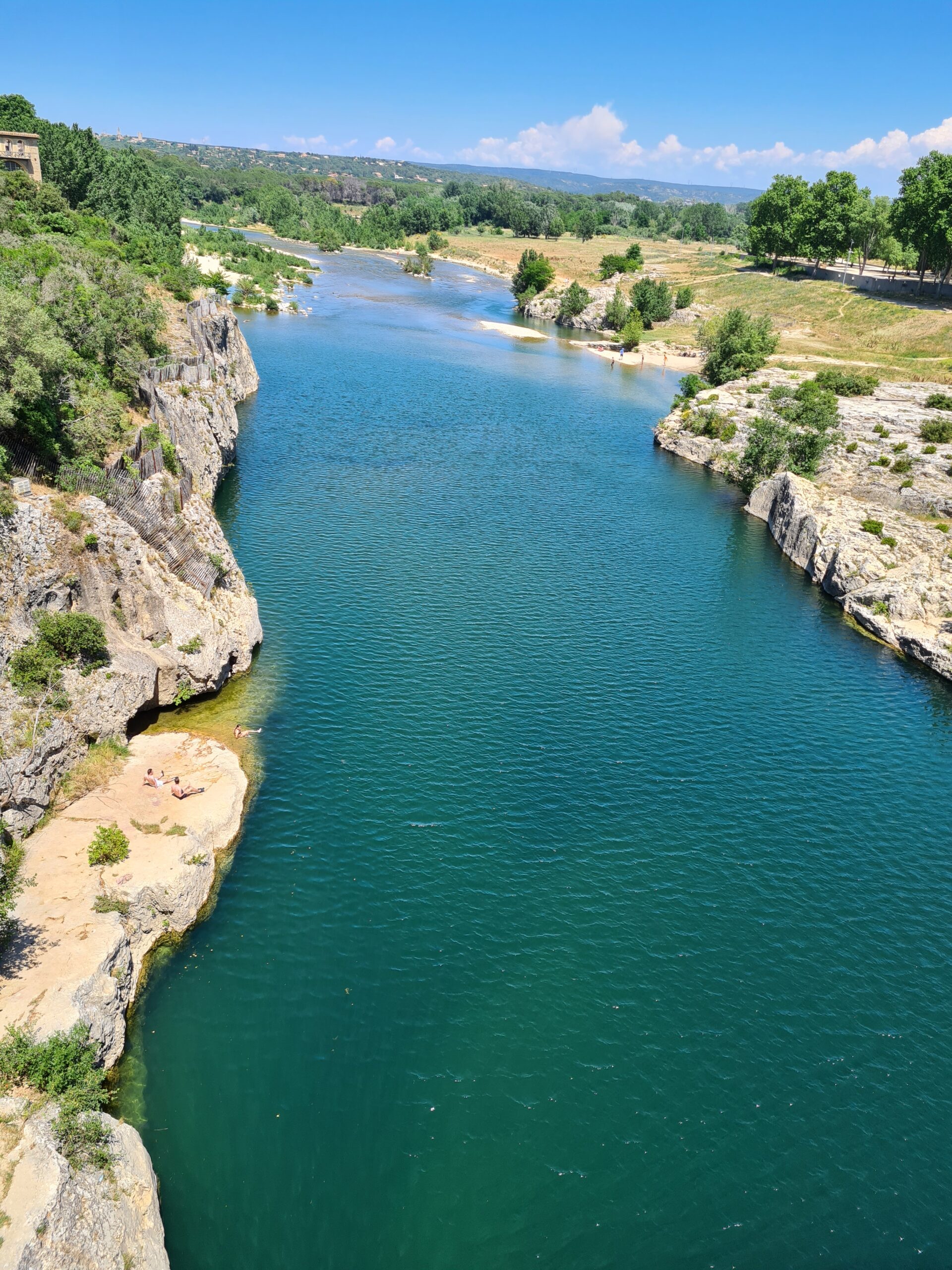
Roman Museum
My favorite museum in Nîmes is without a doubt the Musée de la Romanité, the Roman Museum as you probably guessed it. It’s an interesting museum depicting all things Roman in Nîmes and the rest of the region.
Day trip in Aigues-Mortes
Aigues-Mortes is the perfect place for a day trip from Nîmes, especially if you’re looking for family-friendly outings. It is a charming medieval town 50 min away from Nîmes by regional train, TER. The moment you set foot in there, you are transported to a time of princesses, knights and troubadours.
Of all the cities of France, I found that Aigues-Mortes is the one that gave me the most authentic feeling of being transported to the Middle Ages. The city still has all its original fortifications and towers built in the 13th century, in a remarkable state of preservation. You will find all kinds of medieval-themed attire such as princess dresses, toy swords and knights’ armor sold everywhere. When I was there, they were holding a medieval fair in which you could eat medieval food, play medieval games and listen to troubadours singing as you would have in the 13th century. They’re planning to host again the medieval festival, Fête de la Saint-Louis, at the end of August 2024.
If you’re interested in a guided tour of the fortifications, check out this visit.
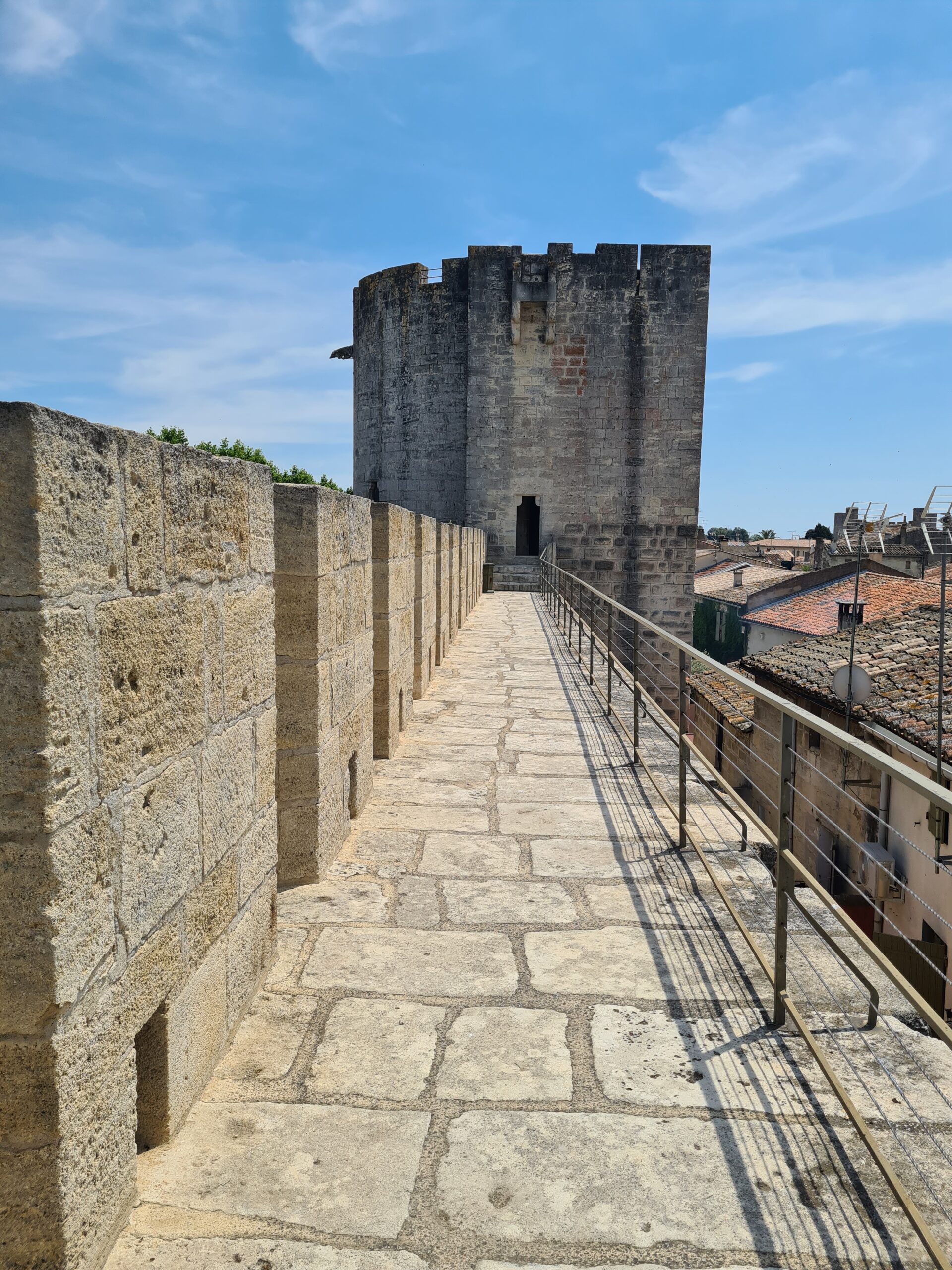
The Pink Lake of Aigues Mortes
Just outside of the city of Aigues Mortes, you’ll find the Salin d’Aigues Mortes. It’s a salt lake where, you guessed it, salt is produced. What it is, more importantly, is a PINK lake. You don’t see that every day. Since it’s only 2 min outside the city, I highly suggest finding the time to do it!
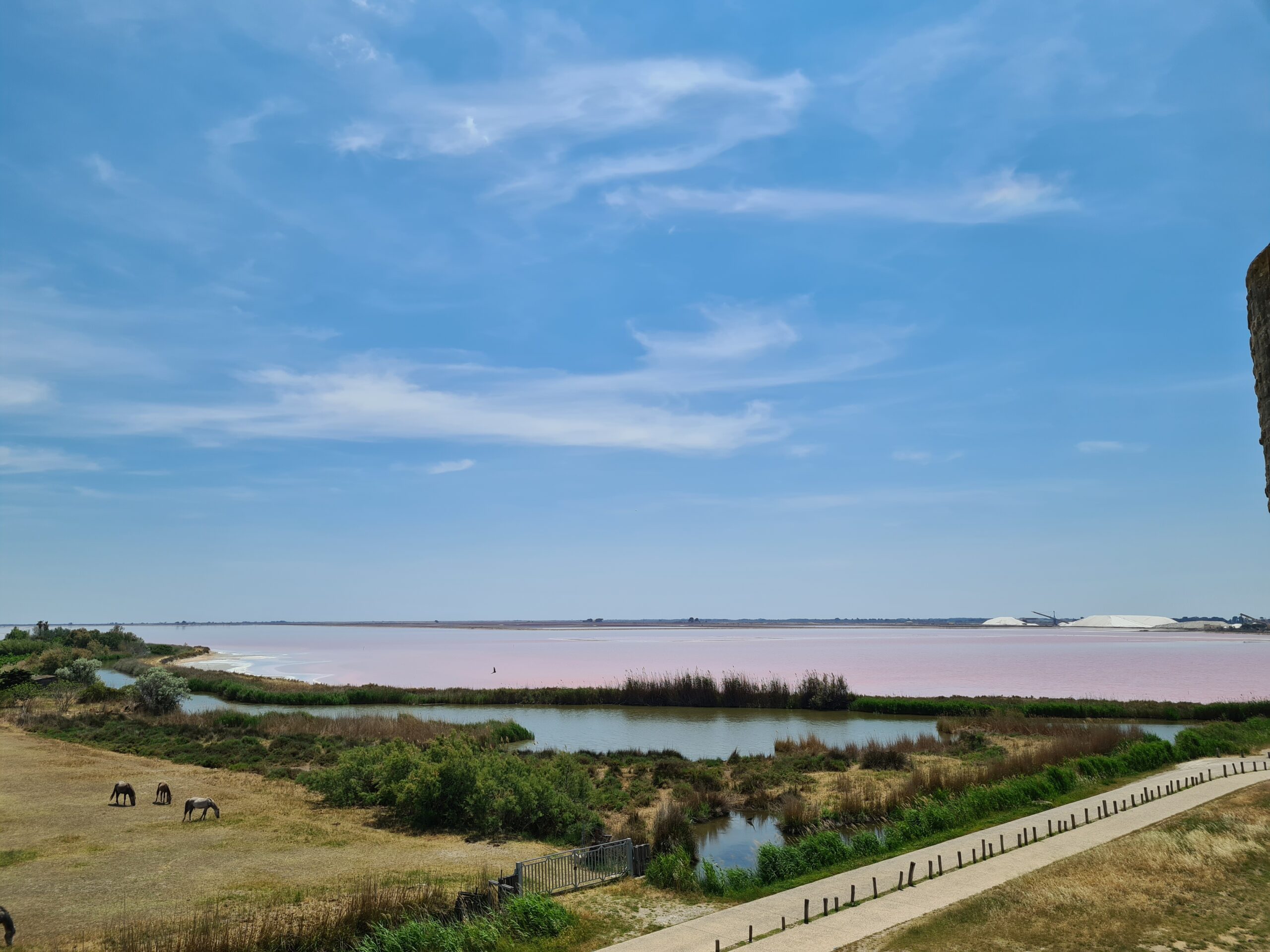
How to get to Nimes
- The comfortable route: take a train from Paris to Nîmes. You can book the trip on the SNCF website. 3h only!
- The cheapest route: Take a bus from Paris Bercy station to Nîmes with the following companies: Flixbus, blablacar. Be careful though, it’s a 9h bus ride!
- The convenient way: While the journey this way is longer than the train (6h30), renting a car will allow you to travel wherever you want in the South of France. However, every place mentioned in this post is readily accessible by public transport, so a car is not mandatory.
Things to know before going to France:
- How to guarantee a good welcome: The French like it when you make an effort to speak French before switching to English – they are much more inclined to help you after that. The magic sentence is: “bonjour, est-ce que vous pouvez m’aider ? Je cherche…”. They also say bonjour (hello), s’il-vous-plait (please), merci (thank you) and au revoir (goodbye) in every store they enter and leave.
- Money: France is not a cashless country: many stores will have a “no cards below 5/10 euros” policy, so you’ll have to pay in cash there. Have euros on you!
- Transportation: Trains are the most convenient mode of transportation but they’re also the most expensive, so plan your train trips well in advance! In last-minute reservations, you’ll find that flights and busses are much, much cheaper.
If in a pinch, carpooling is big in France! On the Blablacar app, you can book a trip with a driver already doing the same trip as you and become a passenger in his car. - What to wear: Weather changes all the time, so wear versatile clothing that can be taken off and put back on comfortably.
- Free water: Water is free in all restaurants, by law. Do not buy bottled water, ask for “a carafe d’eau” and you’re golden.
- Groceries: Supermarkets outside of Paris close early, 8 or 9 pm tops.
- Very important tip before you start this article: chateau in French means castle!
Check out my other articles
If you liked this recounting of my travels in Nimes, South of France, check out my other articles:
- Zakopane, Poland’s winter capital
- Amboise, in the Loire Valley in France.
- And if you want to learn more about the whole off-the-beaten-path-travel concept of my blog, read my explanation of it here.
